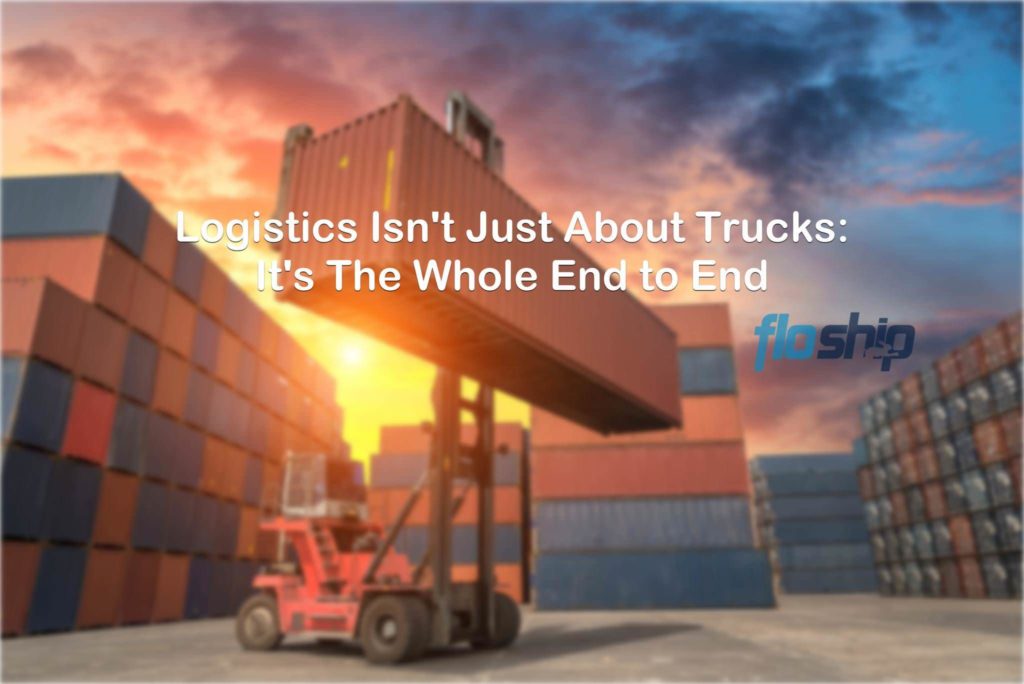In 2004, when UPS directed its drivers to avoid left-hand turns in a bid to improve efficiency, many wondered if it really worked. But as of 2012, the company claims to have saved around 10 million gallons of gas, using this ‘rule.’
Last week, in the run up to Black Friday and the holiday shopping season, UPS announced another way of reducing time their drivers spent on the road.
By sorting parcels at the hub, UPS can now plot and give drivers the most efficient route possible.
This race towards greater efficiency is in response to increased customer demands for faster delivery times. When Amazon announced drone delivery in 2013, it seemed implausible. But in 2015, not so much–with driverless cars on major highways and electric delivery vehicles, the move towards transport autonomy gets more interesting by the day.
The spotlight on delivery methods reflects the common misconception among consumers that logistics is centered around delivery.
Some consumers are under the impression that when you place an order, it’s immediately placed on a delivery truck headed straight to you. Yet, it’s not that simple: a lot more goes into delivering the package to you.
Industry analysts blame the diminished human interaction that online shopping gives.
From the product selection, payment through to delivery, the only time consumers interact with a “representative” of the store, is when the delivery person rings the buzzer.
Supply chain management and logistics are closely intertwined, but are not the same thing.
In modern logistics, a ton of planning, creating and monitoring flows of goods and information takes place.
Delivery (transportation) also known as the ‘last mile’ is one part of logistics; it’s a section of outbound logistics, which itself is a sub-section of the entire supply chain.
In supply chain management, logistics is defined as “the process that manages movement of resources from point A to point B.”
The Supply Chain
To gain a 10,000 foot view, lets trace the path of a product from raw materials to delivery.
Note: The supply chain is much more complex than the sections outlined below.
Key Activities:
Order Processing
– The flow of information that precedes the goods, accompanies and follows them. Some analysts also include the information gathered from R&D and prototyping when examining the supply chain. DHL further divides order processing into: order transmission, preparation, routing, picking, shipment and invoicing.
Warehousing
– In an ideal world, there would be no need to store any stock. Raw materials would be ordered, products created and immediately shipped directly to customers. But since we’re not there…yet, manufacturers have to maintain warehouses to store raw materials in storage at different stages of production. Even after production, the finished goods will be stored as inventory before being distributed.
Transport
– Transport is an essential part of the supply chain and may be either inward bound (moving raw materials to production) or outward bound (moving finished goods to consumers). Transport is also involved when reverse logistics have to be carried out.
Other explanations of the supply chain may include the source of raw materials, how they are transformed into finished products, the human personnel involved at every stage of the process, the social impact of the raw material extraction, the impact of change on the functioning of the supply chain etc.
Can you see why logistics is much more than just transportation?
Simply put, logistics is an integrated part of the whole that is supply chain management.
End to End Logistics
Logistics is only one activity in the end-to-end process of supply chain management.
End to End logistics includes everything from from pick & pack until final delivery.
From managing the entire fleet, warehouses and depots to monitoring and optimization of the supply chain, some companies offer retailers a complete end-to-end logistics package.
Other companies even offer add-on services like order fulfillment, handling customer care and value added services like repacking containerized goods into smaller units.
The role of trucking in last mile fulfillment is invaluable but the entire supply chain working in sync to deliver goods on time and on schedule, should also be recognized.
Often regarded as the last frontier in the supply chain, the last mile has been a tough nut to crack for retailers, both big and small:
They seem to get everything else right until a delivery problem rears its head. Smart business have gotten round this by retaining the services of order fulfillment companies. These companies specialize in making sure your last mile logistics are as smooth as possible.
Whether it’s inventory tagging, value added services or customer care, these companies are capable of handling all supply chain scenarios.
For a demo of how Floship can help your business today, contact us here.

Ready To Upgrade Your Logistic Solution?
Speak to Floship ecommerce logistic consultant about improving your global support chain today




